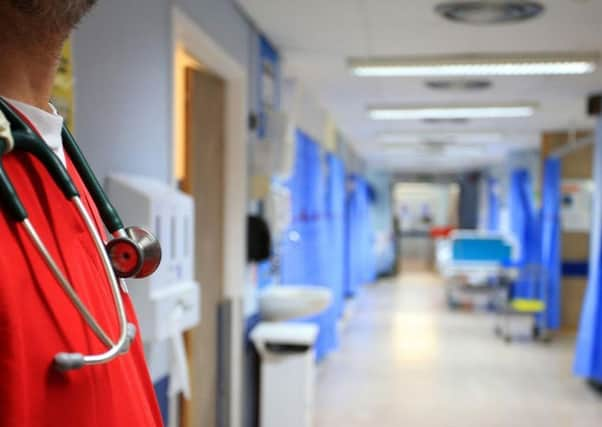Yorkshire hospitals faced with arrival of '˜eternal winter'


A leading doctor warned of an “eternal winter” facing the health service after hospitals struggled with freezing weather and rising numbers of patients needing treatment.
Just 84.6 per cent of patients were seen within four hours at A&E departments in England.
Advertisement
Hide AdAdvertisement
Hide AdThe figure for ‘Type 1’ A&Es, those offering 24/7 care to critically ill people, was just 76.4 per cent of patients treated within the four-hour target.
The March statistics released by NHS England also mean 2017-18 is now confirmed as the worst since records began in 2003-04.
The figures showed the number of NHS patients having to wait more than a year for treatment was more than 2,000 for the first time since August 2012.
NHS England data on waiting times for planned treatment revealed 87.9 per cent of patients started treatment within 18 weeks, meaning the 92 per cent target has not been met in two years.
Advertisement
Hide AdAdvertisement
Hide AdDr Nick Scriven, president of the Society for Acute Medicine, said: “These stark figures – including a further drop in A&E performance and 5,000 delayed patient transfers – are the clearest indication yet of the eternal winter we now face in the NHS, and this should be a turning point in how we approach all planning from now on.
“As we settle into spring, hospitals remain under immense pressure, and I am unsure how on Earth we are going to catch up with elective surgery given some non-urgent operations continue to be cancelled in parts of the country.”
At Leeds Teaching Hospitals NHS Trust, 70.9 per cent of A&E patients were either admitted, transferred or discharged from hospital within four hours in March. The figure for the Leeds trust’s major casualty units was just 64.8 per cent.
Deputy chief executive Suzanne Hinchliffe said: “We continue to work with our partners in the NHS and social care to reduce waiting times in our emergency departments where possible.
Advertisement
Hide AdAdvertisement
Hide Ad“We are incredibly proud of all of our staff who work tirelessly to ensure our patients receive the best possible care during their time in hospital.”
At Hull and East Yorkshire Hospitals NHS Trust, the overall A&E figure for March was 76.4 per cent. Chief operating officer Teresa Cope said: “It will come as no surprise to the public that our A&E department has been under pressure during the winter and that pressure has continued into the spring.
“Although our figures are not where we would want them to be, our performance is in line with the national average and shows we are not alone in experiencing increased demand.”
Janet Davies, chief executive of the Royal College of Nursing, said it was “shameful” that nationally, more than 75,000 patients who arrived at A&E had to be kept on trolleys for up to 12 hours while they waited for a bed. “We need urgent answers as to why it has more than trebled in the last year,” she added.
Advertisement
Hide AdAdvertisement
Hide AdChief executive of health service regulator NHS Improvement Ian Dalton said the statistics “highlight the mammoth pressures facing the NHS this winter, which have continued into March”.
Praising staff, he said: “They have worked flat-out to care for patients in the face of rising demand, record flu levels and bad weather.
“They have overseen a five per cent reduction in the number of patients facing delays to leave hospital compared to last year and they have done this while facing the highest number of emergency admissions seen since records began – 15,000 more patients admitted as emergencies this March compared to last year.
“April tends to mark the point where pressures on the NHS start to decrease, but we cannot be complacent.”
Advertisement
Hide AdAdvertisement
Hide AdAn NHS England spokesman said: “As expected, these figures for a month ago confirm what was widely reported at the time, namely that during March the NHS continued to experience severe winter pressures.”
A group of 20 NHS trusts has launched a legal bid for business rates relief in a landmark case that could save hospitals almost £300m a year.
The trusts, which include York Teaching Hospital, have begun court proceedings against 49 councils, seeking to be treated the same as private hospitals for tax relief.
More than one in four of all private hospitals in England and Wales are registered as charities, allowing them to enjoy 80 per cent business rates relief, while NHS counterparts have been hit with crippling hikes.
A preliminary hearing was held yesterday.